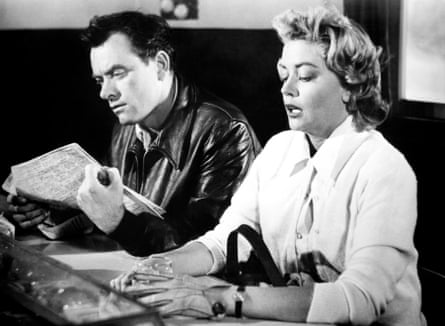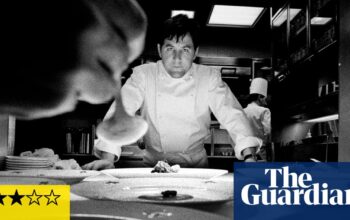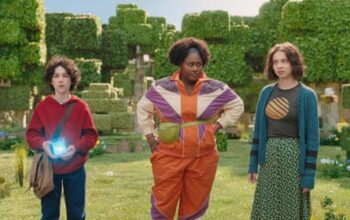Roger Corman was the powerhouse of B-pictures and pulp classics, who in a staggeringly prolific career lasting from the 1950s to the 2010s produced more than 400 movies, and directed more than 50 – films such as The Wasp Woman, A Bucket of Blood, The Wild Angels, The Fall of the House of Usher, Little Shop of Horrors and The Man With the X-Ray Eyes. And with his collaborations with Vincent Price on a number of inspired Edgar Allan Poe adaptations in the 1960s, Corman helped to make Poe a canonical figure within American literature and a figure of enduring pop-cultural importance, revered by academics who have made campus careers out of the author.
Corman was the entrepreneurial life force of low-budget independent cinema with celluloid in his veins, who became a living icon of cinephilia to generations of movie-makers by giving them their all-important first breaks and a lesson in getting movies made effectively, on budget and on schedule. His former employees include Jack Nicholson, Martin Scorsese, Robert De Niro, Carl Franklin, Curtis Hanson, Ron Howard, James Cameron, Joe Dante and Jonathan Demme. Francis Ford Coppola was an assistant director on one film and Peter Bogdanovich did some second unit work.

Corman’s films might have been mocked as exploitation trash but Corman himself did not agree with this snobby attitude. “Show me a film which isn’t an exploitation film,” he said, and his pioneering genius for grabbing the audience’s attention – thrilling them, scaring them and titillating them – made him a primitivist genius, the unquestioned master of art brut in American cinema.
Corman could make sci-fi, horror, crime, gangster thrillers and westerns, and did it with a quick, lethal effectiveness and brash simplicity that the new young movie brats would take and develop. When Spielberg made Jaws in the mid-70s, it was instantly identified as a Roger Corman shocker with a budget upgrade. The same goes for the ineffably macabre The Silence of the Lambs in 1991, directed by Demme, who had made his bones in 1974 directing an outrageous prison shocker that Corman produced: Caged Heat, about the sexually frustrated, scantily clad young inhabitants of a women’s prison.

Corman was the Cro Magnon prototype of Hollywood in its New Wave phase and beyond. At a time when studio pictures were on the way out, he was a kind of indie studio head for a rebellious young generation, reinventing a range of genres and making them endlessly malleable and productive. To add to it all, his distribution company imported into the US new movies by Fellini, Bergman, Truffaut and Kurosawa, because he loved them and because he – correctly – saw this was a profitable niche.
It’s amazing to see how many templates Corman laid down for later cinema. In 1960, he directed my favourite of his films, The Little Shop of Horrors, an utterly bizarre no-budget horror comedy made over two days and a night about a weird houseplant in a flower store that lives off human blood. In 1982, it became a smash-hit Broadway stage musical and four years after that another movie, based on the stage show that is still endlessly revived. So Corman was the grandfather to a stage and screen institution, and the grumpy flower store owner, Mr Mushnik, played by Mel Welles, is probably a cousin to Zero Mostel’s desperate impresario Max Bialystock in Mel Brooks’s The Producers.

In 1954, Corman produced the car-chase thriller The Fast and the Furious, brilliantly locating the lucrative market for petrol-head movies, and that title (and the spirit) of his film lives on in the Fast and Furious franchise of the present day. And with Death Race 2000, which he produced in 1975 – featuring people driving across the country earning points for killing people – Corman helped invent that bread-and-circuses futurism that persists now in the form of The Hunger Games and The Maze Runner. And in 1977 he gave Ron Howard a lead acting role in another car-crash extravaganza, which he entitled Grand Theft Auto – thus planting the seed, I suspect, for the gamers’ craze.
Gangsters and crime weren’t exactly the Corman keynote, but he made powerfully effective and successful movies in that style, directing Machine-Gun Kelly in 1958, launching the career of Charles Bronson, and also the fierce Bloody Mama in 1972 with Shelley Winters as the real-life outlaw Ma Barker and a young Robert De Niro as one of her sons. The film has some startling archive footage, incidentally, of the huge Ku Klux Klan rally in Washington.
It was at this point that Corman gave a hugely important directorial break to the young Martin Scorsese, allowing him in 1972 to make Boxcar Bertha, a Bonnie-and-Clyde-type tale of two train robbers and lovers on the run, played by Barbara Hershey and David Carradine. The movie gave Scorsese a chance to show that he could handle a conventional genre movie with period costume and a serious (if not massive) budget.

Perhaps it hardly makes sense to pick on any particular Corman movie when this is a film-maker who almost has to be seen in wholesale terms. But I loved the demented genius of his The Man With the X-Ray Eyes, with Ray Milland as the obsessive scientist who wants to create superhuman vision. It’s crude, basic stuff in many ways, but there is pure storytelling gusto in the way the scene shifts from the lab to the party where Milland sees the naked people dancing, to the fairground where he scratches a living as a mind-reading turn, to Las Vegas, where he tries to make money beating the system, and finally – driven mad by being able to see through everything, and so see everything and nothing – to the Christian revivalist tent where the angry preacher tells him: “If thine eye offend thee, pluck it out …” – leading to an outrageous flourish of grand guignol horror.
There is the rocket-fuel of Corman’s talent, fuel that he generously made available to so many other, younger film-makers.
Source: theguardian.com


